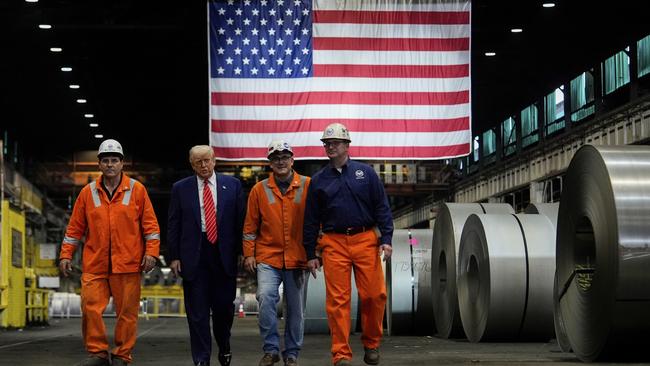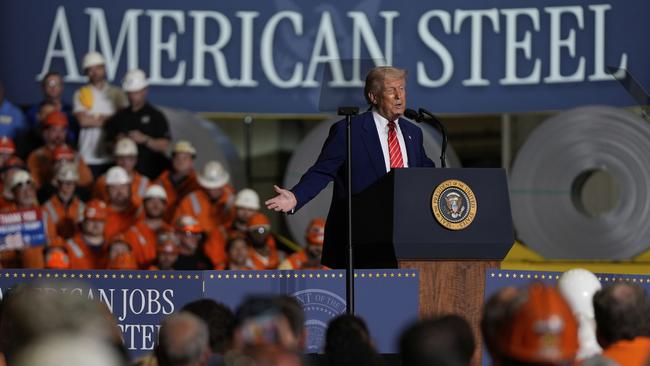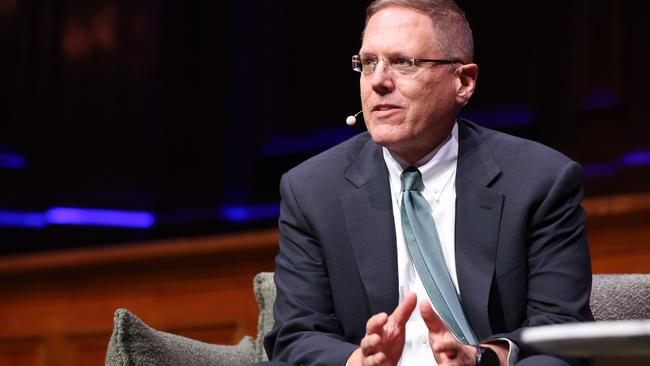
If 50 per cent US steel tariffs become a reality, nearly 26 million tonnes that the US imported last year will need to find a home somewhere else.
That is likely to mean a wave of even cheaper metal flooding the rest of the world, especially Australia.
Even if it is all talk – Trump has backed down on 50 per cent steel tariffs before – the timing of the latest move in the US trade war couldn’t be worse for the collapsed OneSteel. Administrators are in the process of trying to stabilise the business while they seek a buyer.
Already weak Asian steel prices have made rescue efforts tough, and this suggests more taxpayer funds will be needed to keep OneSteel going.
By the time of its collapse, the steelmaker was losing more than $1m a day and prices for its long steel products have since weakened on Trump’s first wave of steel tariffs.

Remember, it was the South Australian government that put the Sanjeev Gupta-owned steelmaker – which owed $1.3bn – in administration in February seeking to get the jump on banks and other creditors.
This left Prime Minister Anthony Albanese with little choice but to also support the steelmaker. He promised hundreds of millions of dollars to modernise the ageing plant.
Trump has now promised to double tariffs on steel and aluminium imports from 25 per cent to 50 per cent.
The context of the announcement is just as important; the US President was speaking to steelworkers in Pennsylvania as he flagged a $US15bn ($23bn) “partnership” between Japan’s Nippon Steel and US Steel.
The Japanese giant had attempted to buy US Steel earlier last year, but was blocked by the then Biden administration on national security grounds. Trump has previously supported keeping Nippon Steel out.
This time he stopped short of labelling the Nippon Steel move a buyout, but backed the Japanese giant to invest billions into US Steel’s mills and boost capacity. In a classic Trump diversion, he flagged the new tariffs that are set to take effect on Wednesday.
Much focus will now be on Australia’s biggest steelmaker, BlueScope. It exports a small amount of flat steel to the US from its plant in Wollongong, NSW, however it becomes a net beneficiary of Trump’s tariffs.
Australian steelworkers may feel the pinch of any production slowdown, but BlueScope has a big presence on the ground in the US, where it is a big suppler to the domestic carmaking sector.
Its Ohio-based North Star steel plant is already seeing gains from rising domestic prices for US steel from Trump’s first wave. Even with a slowing of the US economy and trade uncertainty dampening demand, US steel benchmarks have surged by almost 20 per cent this year.
When Trump outlined his initial round of steel tariffs in March, they jumped as much as 40 per cent. In contrast, Asia Pacific benchmark steel prices are so far down more than 5 per cent this year.
Then there’s the second round effects that should have Australia worried under a 50 per cent tariff regime. Remember, the rule of thumb: a distortion in one market can have a serious knock-on effect across other related markets. Slowing global steel manufacturing stands to directly hit demand for Australia’s two big exports of iron ore and coking coal.
But the biggest unknown out of this is in the US.

Given the role of steel and aluminium in powering its economy – from car manufacturing to construction – the sudden surge in domestic prices again puts the prospect of a US recession back in play.
Last month, The Australian sat down with Pittsburgh-based Alcoa boss Bill Oplinger at the Melbourne Mining Club. He was talking through the implications of a 25 per cent tariff on his global aluminium business.
Much of his production is from low-cost mills in Canada, powered by cheap hydro-electricity, and shipped to US carmakers.
The US is short four million tonnes of aluminium a year, and simply doesn’t have the manufacturing capacity to make up the difference. It produces a little under 700,000 tonnes. Another complication, it has no commercial bauxite deposits which is a key ingredient needed to make aluminium. Alcoa mines bauxite in Western Australia.
Oplinger said he was learning to live with a 25 per cent tariff although it added $US100m to costs. However, a 50 per cent tariff that Trump had also announced “drastically changes trade flows” into the US, the Alcoa boss said.

At that level, the financial scales firmly move against importing into the US, Oplinger said. “We were about an hour away to stop all rail cars from Canada into the United States,” Oplinger told The Australian about the last time Trump threatened tariffs at 50 per cent.
The integration of the Canadian and US economies over decades is now at the point where they are interdependent, and it can’t be switched on or off.
In Alcoa’s case, this means every job in Canada in primary aluminium production supports about 13 manufacturing jobs in the US. This will be the one to watch.
It’s little wonder Prime Minister Anthony Albanese on Sunday described the new round of steel tariffs as “an act of economic self harm”.
Of course, all this assumes Trump follows through with his latest threat.
After all, Wall Street is in the middle of the amusingly labelled “TACO trade” and the smart money is on Trump always backing down.




Assuming there’s no Donald Trump bluff, and (this time) the US president does go through with his threats to double his already punishing steel and aluminium tariffs, the hurdle for the rescue of OneSteel at Whyalla in South Australia just got higher. Potentially out of reach.